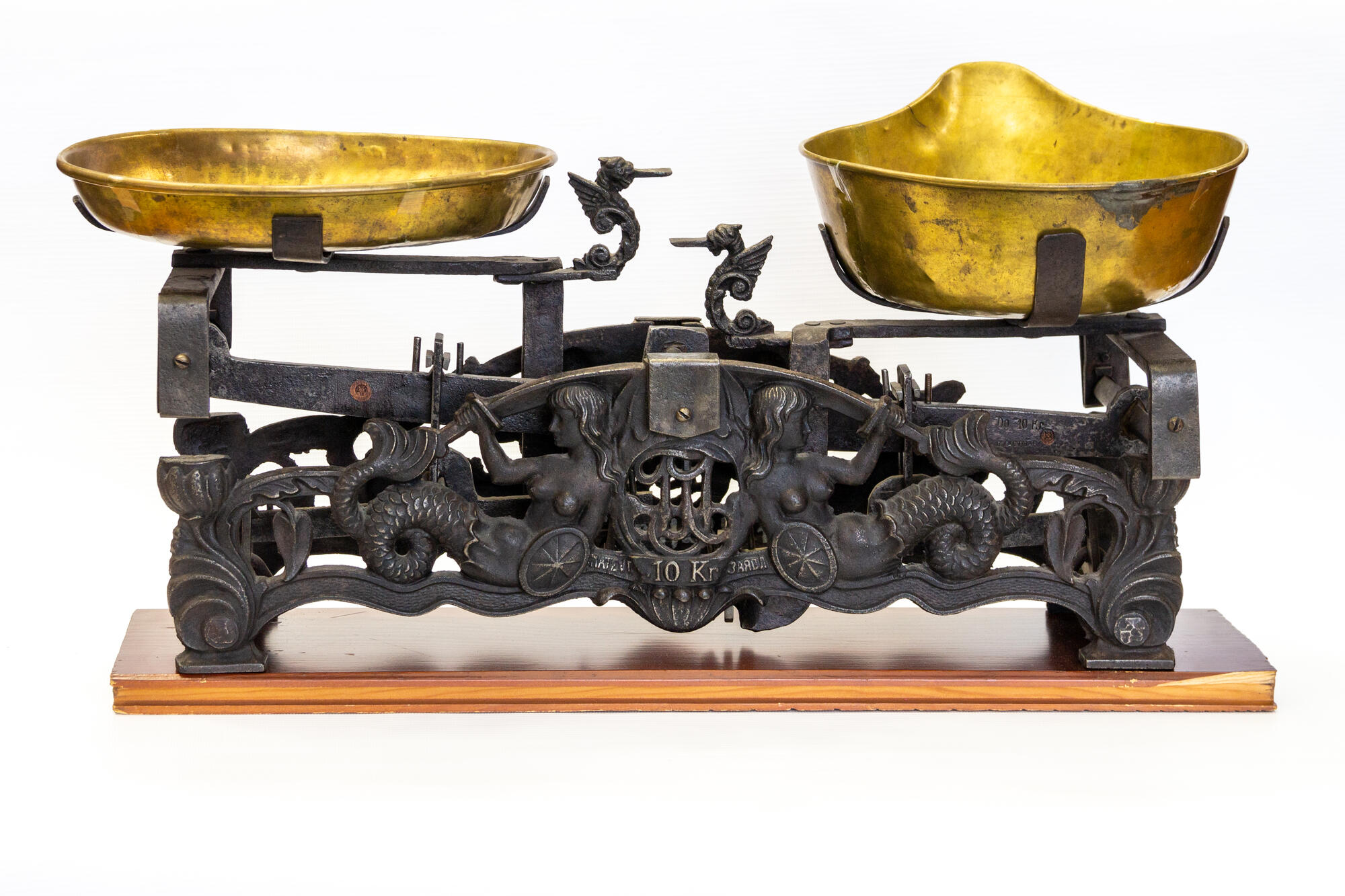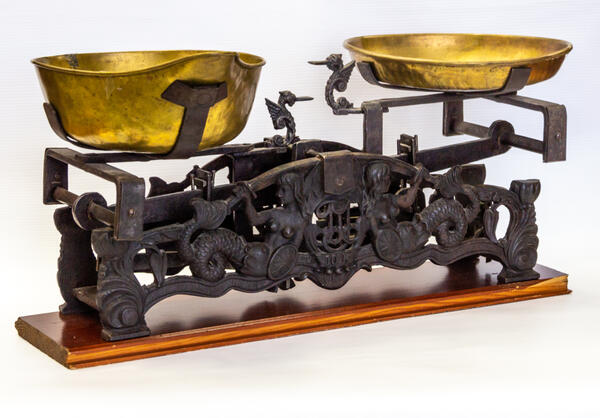Balance scales are an equal-arm lever, like a rocker arm, to both ends of which are suspended plates for weights and the thing that is weighed. The lever’s fulcrum point is located at an equal distance from the sides where the forces are applied. Such scales work by balancing the lever.
The origins and improvement of scales is closely tied to the development of trade, manufacturing technologies and science. Considering how society was developing — primarily trade relations — there was a strong demand for a device for weighing goods intended for sale.
The first scales found by archaeologists date back to the 5th millennium BC, Mesopotamia. In ancient Rus, goods were weighed on equal-arm scales called “skalvy”. They were used in trade for weighing coins, determining the weight of silver for jewelry, and weighing especially valuable goods, such as expensive spices and herbs. In size and functionality, the skalvy resembled hand-held pharmacy scales and were not used for weighing heavy loads. Later, by the beginning of the 13th century, larger equal-arm rocker-like devices were created for weighing such goods.
Up until the 15th century, the church was the keeper of weights and measures. People whose task was to oversee the accuracy of measurements appeared in churches and temples. Princes Vladimir and Vsevolod instructed “bishops to oversee weights and measures”, and ordered “to execute close to death” those who were caught scamming the customer by telling an incorrect weight. Tsar Ivan the Terrible generally forbade merchants to have their own weights and scales: they were allowed to use only state-issued ones. Tsar Fyodor Alekseyevich ordered the existing scales with their “eagle seal” branding to be checked. Peter the Great issued a decree, according to which scales had to be inspected twice a year. Units of length, weight (mass) and other measurements in Russia were standardized only in 1736. Weights and other measuring appliances were validated by comparing them to the standard.
In 1842, the Depot of Exemplary Weights and Measures was founded in St. Petersburg. In 1892 Dmitri Ivanovich Mendeleev was appointed its keeper. A year later it became known as the Main Chamber of Weights and Measures, and today it is called the Russian Research Institute of Metrology and bears the name of the great scientist. Today, one of the Institute’s laboratories houses scales so precise, that even direct sunlight could distort the measurement result.




